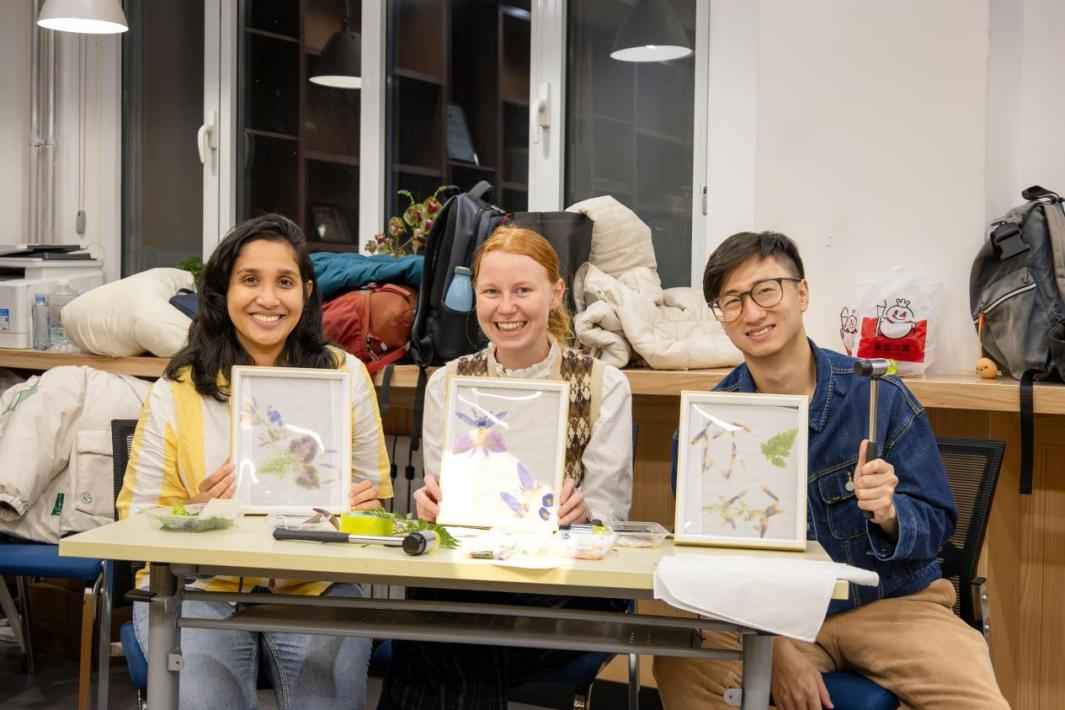On March 20th, during the Spring Equinox, the Joint Science College (JSC) held the 5th Culture Roam event themed “Plant Dyeing: Preserving the Colors of Spring” in R.107, Songxin Building to promote fine traditional Chinese culture and enhance students' understanding of nature and intangible cultural heritage skills. The Australian National University (ANU) Biology teaching team and some students from JSC attended the event, hosted by Teng Feitongtong and Hu Tianhui, the heads of Arts & Cultural Engagement Department of the Student Union.
Plant dyeing is an ancient intangible cultural heritage, originated from traditional dyeing methods during the Ming and Qing dynasties. This technique uses the roots, stems, flowers, and leaves of natural plants as printing materials, and through physical hammering, the plant's juices are transferred into the fabric, leaving behind the plant's shape, color, and vein patterns.
The hosts first gave a detailed introduction to the history and artistic value of plant dyeing, as well as some basic techniques. Afterward, participants began their creative work, using flowers, grasses, and trees from the campus as natural materials. Everyone carefully selected their favorite leaves and petals, placed them on white cotton cloth, and gently hammered them to allow the plant juices to penetrate the fibers, leaving a unique natural print. During the process, Australian teachers and Chinese students exchanged creative ideas, and the whole event was filled with laughter and joy.
This event has allowed participants to experience the charm of traditional techniques and deepened their understanding of traditional Chinese culture, such as the solar term of Spring Equinox. Additionally, it has fostered a shared love for natural art in an international exchange atmosphere, adding a vibrant splash of color to campus life.

